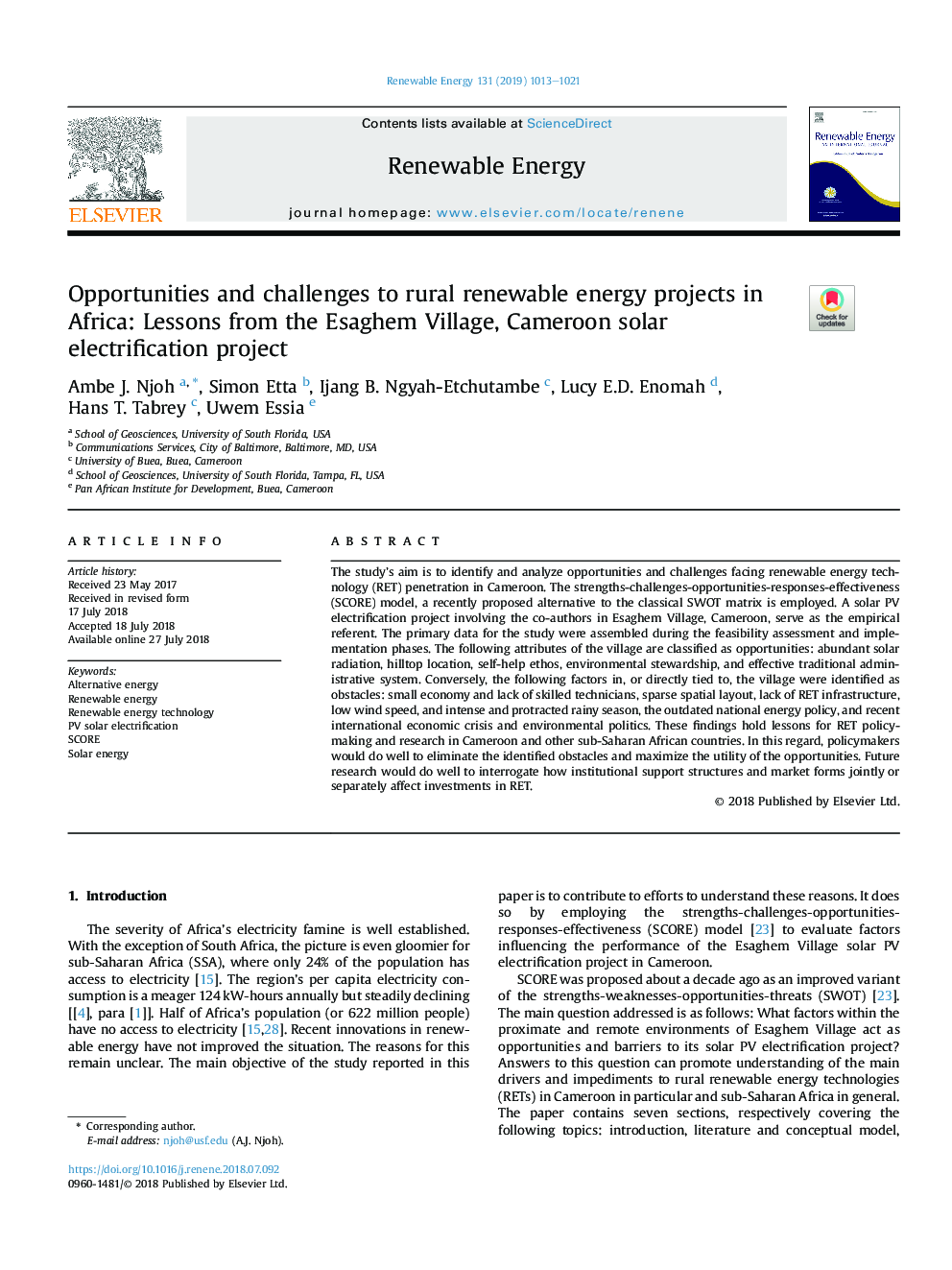| Article ID | Journal | Published Year | Pages | File Type |
|---|---|---|---|---|
| 6763716 | Renewable Energy | 2019 | 9 Pages |
Abstract
The study's aim is to identify and analyze opportunities and challenges facing renewable energy technology (RET) penetration in Cameroon. The strengths-challenges-opportunities-responses-effectiveness (SCORE) model, a recently proposed alternative to the classical SWOT matrix is employed. A solar PV electrification project involving the co-authors in Esaghem Village, Cameroon, serve as the empirical referent. The primary data for the study were assembled during the feasibility assessment and implementation phases. The following attributes of the village are classified as opportunities: abundant solar radiation, hilltop location, self-help ethos, environmental stewardship, and effective traditional administrative system. Conversely, the following factors in, or directly tied to, the village were identified as obstacles: small economy and lack of skilled technicians, sparse spatial layout, lack of RET infrastructure, low wind speed, and intense and protracted rainy season, the outdated national energy policy, and recent international economic crisis and environmental politics. These findings hold lessons for RET policymaking and research in Cameroon and other sub-Saharan African countries. In this regard, policymakers would do well to eliminate the identified obstacles and maximize the utility of the opportunities. Future research would do well to interrogate how institutional support structures and market forms jointly or separately affect investments in RET.
Related Topics
Physical Sciences and Engineering
Energy
Renewable Energy, Sustainability and the Environment
Authors
Ambe J. Njoh, Simon Etta, Ijang B. Ngyah-Etchutambe, Lucy E.D. Enomah, Hans T. Tabrey, Uwem Essia,
